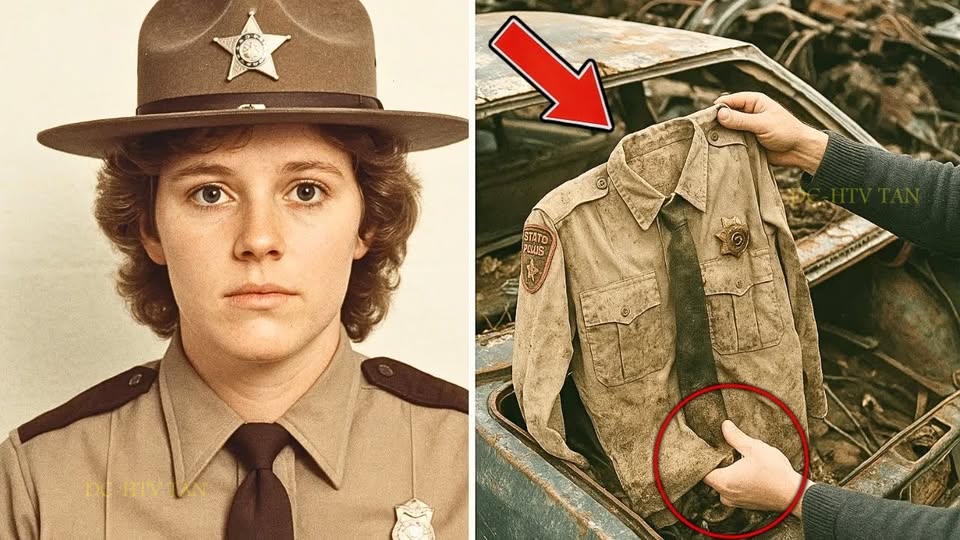In the world of criminal investigation, some cases grow cold, but few are as frozen solid as the 1985 disappearance of Trooper Rebecca Hartwell. The official file was closed, the leads had dried up, and the memory of the young officer had begun to fade from public consciousness. The catalyst for its resurrection was not a new witness or a deathbed confession, but a routine day at Santos Salvage. Worker Miguel Santos, preparing a 1979 Buick for the crusher, used a crowbar to pry open its stubborn trunk. Inside, he made a discovery that would change everything: a perfectly preserved Arizona State Police uniform, bearing the name of the long-vanished trooper. His responsible decision to immediately call his supervisor set in motion a chain of events that would topple the powerful.
Detective Patricia Chen of the Phoenix PD took the call, recognizing the significance of the find instantly. The first step was establishing a clear chain of custody for the uniform and the vehicle itself. Chen’s methodical review of the car’s history revealed it had come from an insurance auction and was originally linked to a defunct rental company. Digging into corporate records, she found a connection to a company owned by none other than Vincent Cormier, a sitting federal judge. This was no longer a simple missing person case; it was a potential corruption investigation involving one of the most powerful legal figures in the state. Chen’s next move was to re-interview the original family, leading Rebecca’s brother, David, to share critical information about his sister’s investigation into Cormier that had been ignored years prior.
The investigation’s turning point was forensic. Chen’s team processed the Buick a second time, discovering that the trunk liner had been modified to create a hidden compartment. Even more crucially, they found a micro-cassette tape with a damningly specific label. The lab analysis confirmed the tape’s authenticity, and the audio captured a clear conspiracy to obstruct justice, featuring Judge Cormier. This evidence provided the probable cause needed to escalate the case to the FBI. A federal task force was formed, combining resources to tackle what was now clearly a widespread corruption network. Surveillance was placed on Judge Cormier and the retired Detective Stone, whose financial records revealed unexplained payments coinciding with the original Hartwell investigation.
The procedural walls closed in with a series of strategic arrests and interviews. Faced with the overwhelming audio evidence, members of the conspiracy began to flip, providing testimony against each other. Carlos Morales, the cartel enforcer who carried out the murder, was extradited from Mexico and, in exchange for avoiding the death penalty, provided a full confession and led authorities to Rebecca Hartwell’s body. This physical evidence was the final, critical piece needed for a conviction. Detective Stone, confronted with his financial records and the testimony of his co-conspirators, admitted to being paid to cover up the murder and steer the original investigation away from the truth.
The legal proceedings that followed were among the most significant in the state’s history. The successful prosecution of a federal judge, along with numerous other officials, sent a shockwave through the justice system. The case demonstrated that no one is above the law and highlighted the critical importance of following evidence, no matter where it leads. The initial discovery by a junkyard worker set off a perfect storm of diligent police work, forensic science, and federal collaboration, proving that even the most entrenched secrets can be brought to light through a relentless and systematic pursuit of the truth.


